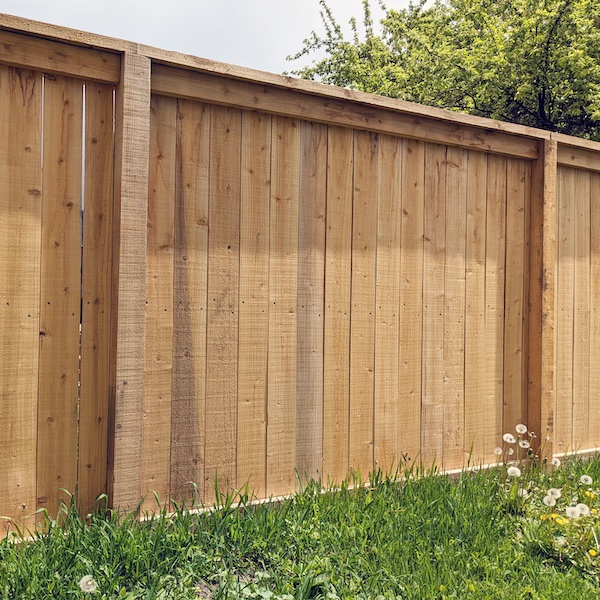Featured

Vinyl fences are a prominent selection for homeowners as a result of their durability, low maintenance needs, and long-lasting look. Unlike wood fences, vinyl doesn't need to be repainted or stained on a regular basis, yet it still requires periodic cleansing to maintain its clean, fresh appearance. Dust, particles, and environmental factors can affect the surface area, making it necessary to utilize the best cleansing techniques to maintain your vinyl fence looking its best. Here's a guide to the most effective practices for cleaning a vinyl fencing.
- Start with Normal Sweeping or Dusting. Regular upkeep is crucial to avoid dust and debris from developing up on your plastic fencing. Utilizing a mop with soft bristles, delicately sweep across the surface of your fencing to remove any loosened dirt.
- Make Use Of a Light Soap and Water Option for General Cleaning. For normal cleansing, a mild soap and water option is normally all you need to get rid of light dirt and spots. Avoid harsh chemicals, as they can harm the plastic surface area. Right here's just how to clean your fence efficiently:

Action 1: Mix a service of warm water and a percentage of light recipe soap in a pail. Go for around 1/4 cup of soap for each gallon of water. Step 2: Utilize a soft fabric, sponge, or non-abrasive brush to apply the soap service to the surface area of your fence. Step 3: Gently scrub the surface to get rid of any dust, gunk, or discolorations. Make certain to cleanse both sides of the fencing for an extensive job. Step 4: Wash the fence thoroughly with a garden tube to eliminate any type of soap deposit. This approach is ideal for regular cleaning and helps keep the tidy, brilliant appearance of your plastic fencing.
- Power Laundering for Tougher Stains. If your fencing has accumulated even more stubborn dust, algae, or mold and mildew, a power washer can assist to recover its appearance. Power washing is a quick and reliable approach, however it's essential to make use of the best strategy to stay clear of harming the plastic. When using a power washing machine:, comply with these actions.
Action 1: Set the power washer to a low-pressure setup (concerning 1,500 to 2,000 psi) High-pressure water can harm plastic, so it's vital to maintain the stress low. Step 2: Hold the nozzle about 2 feet far from the surface area of the fencing. Goal to spray from the top of the fencing downward, functioning your method throughout and down. Step 3: Maintain the nozzle relocating a sweeping movement to avoid focusing pressure on one place. Step 4: Wash thoroughly, ensuring that all water and debris are removed. This approach is great for big locations or fencings that haven't been cleansed in a while.
- Taking On Mold and Mildew. In moist or shaded areas, vinyl fencings can occasionally establish mold or mold growth. It's necessary to cleanse these locations immediately to avoid long-lasting damages. To remove mold and mildew and mildew, make use of a gentle cleaning option made from either white vinegar or bleach. Right here's exactly how to cleanse these persistent developments:
Step 1: For vinegar, mix one cup of white vinegar with a gallon of water. For a bleach solution, mix 1/4 mug of bleach with a gallon of water. Action 2: Use the solution straight to the impacted areas utilizing a sponge or soft towel. Step 3: Allow the service rest for around 10 minutes to break down the mold and mildew or mildew. Step 4: Delicately scrub the area with a soft brush to eliminate the development. Step 5: Rinse the fencing thoroughly with water to remove any type of deposit. Constantly be careful when making use of bleach, as it can stain surface areas and other materials around the fencing. If the mold and mildew trouble continues, you might need to repeat the cleaning or consult a professional.
- Usage Vinyl-Specific Cleaner for Heavy-Duty Jobs. Take into consideration utilizing a vinyl-specific cleanser if your fencing is greatly discolored or you're dealing with hard build-up like grease or tar. These cleaners are created to be risk-free on plastic while efficiently eliminating spots. Make certain to comply with the product's instructions carefully and evaluate it on a tiny area before using it to the entire fence.
- Avoiding Future Dust Accumulation. While cleansing your plastic fence is necessary, you can additionally take steps to lessen the quantity of cleansing required. Below are some avoidance ideas:
Trim greenery: Keep bushes and trees far from your fence. Thick vegetation can catch dampness against the fencing, advertising mold and mold growth. Seal any fractures or spaces: Inspect your fence occasionally for cracks or gaps that can let dust or water in. Sealing these locations can protect against debris from gathering and making cleaning much easier. Mount a safety covering: Some home owners apply a vinyl-safe safety covering to aid prevent dust and spots from staying with the surface. 7. Hiring a Specialist Cleaning Company. If you like to leave the cleansing to the experts, several specialist cleansing services concentrate on outside cleansing, consisting of plastic fences. They have the best equipment and know-how to safely and successfully tidy your fence, making sure that it maintains its appearance without creating damage.
Final thought. Cleaning up a plastic fencing doesn't have actually to be made complex. With a little maintenance, your plastic fencing will certainly continue to improve your residential property's curb charm and give long-term resilience.
Latest Posts
Design Your Perfect Bathroom
Published May 02, 25
1 min read
Discover Hyundai's Most recent Rewards and Deals in Akron
Published May 02, 25
1 min read
Why Choose Ron Marhofer Hyundai for Your Financing Requirements
Published May 02, 25
0 min read